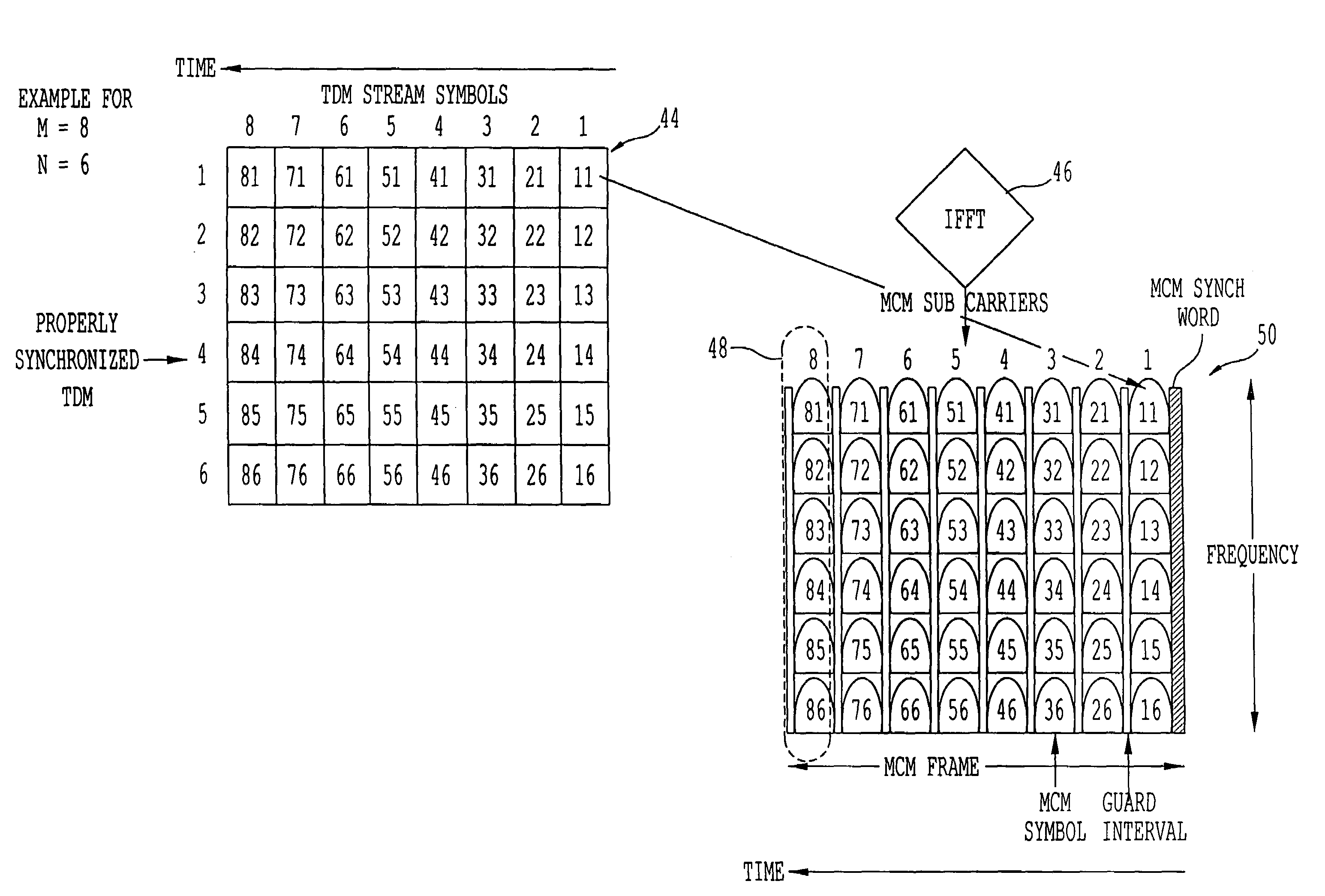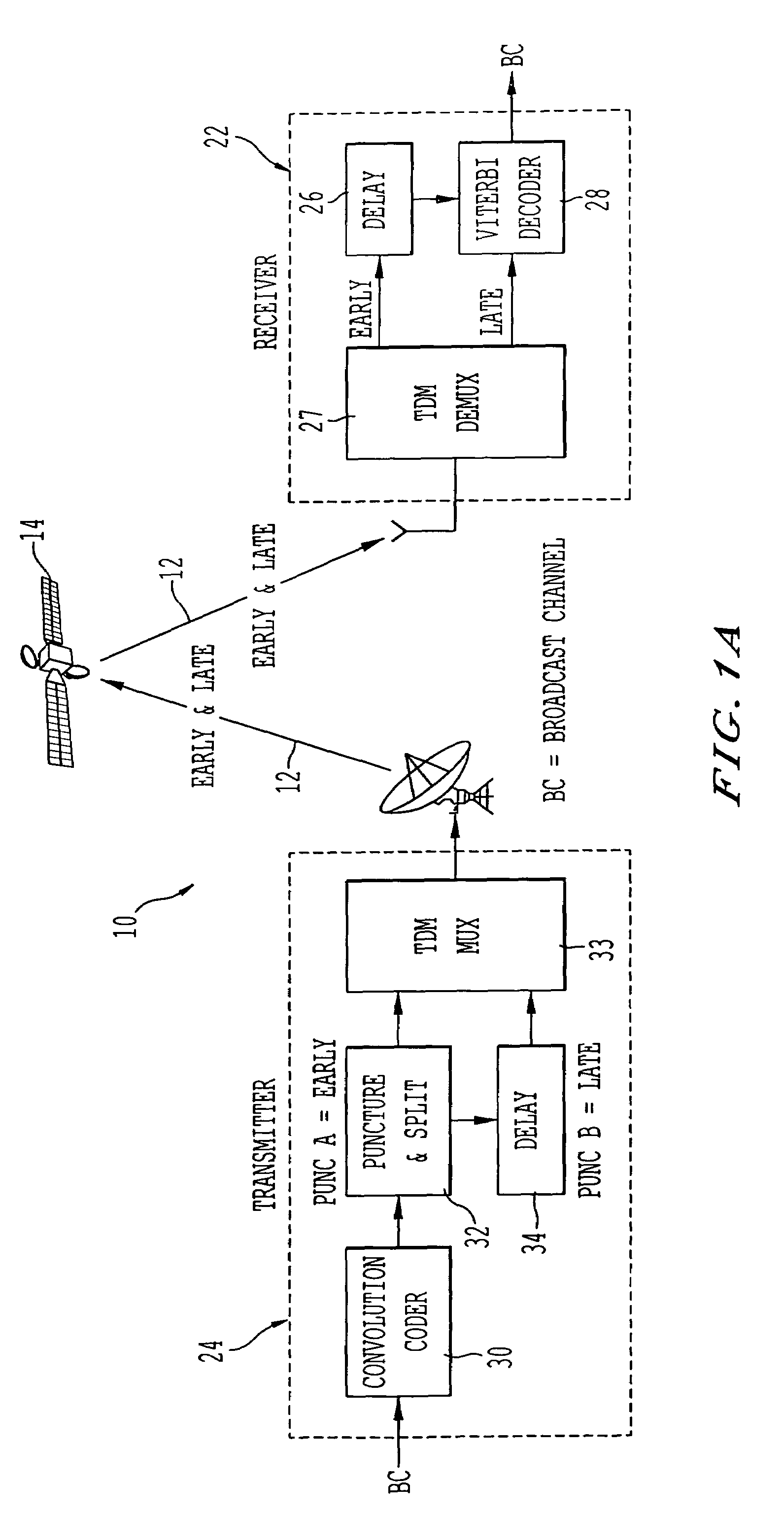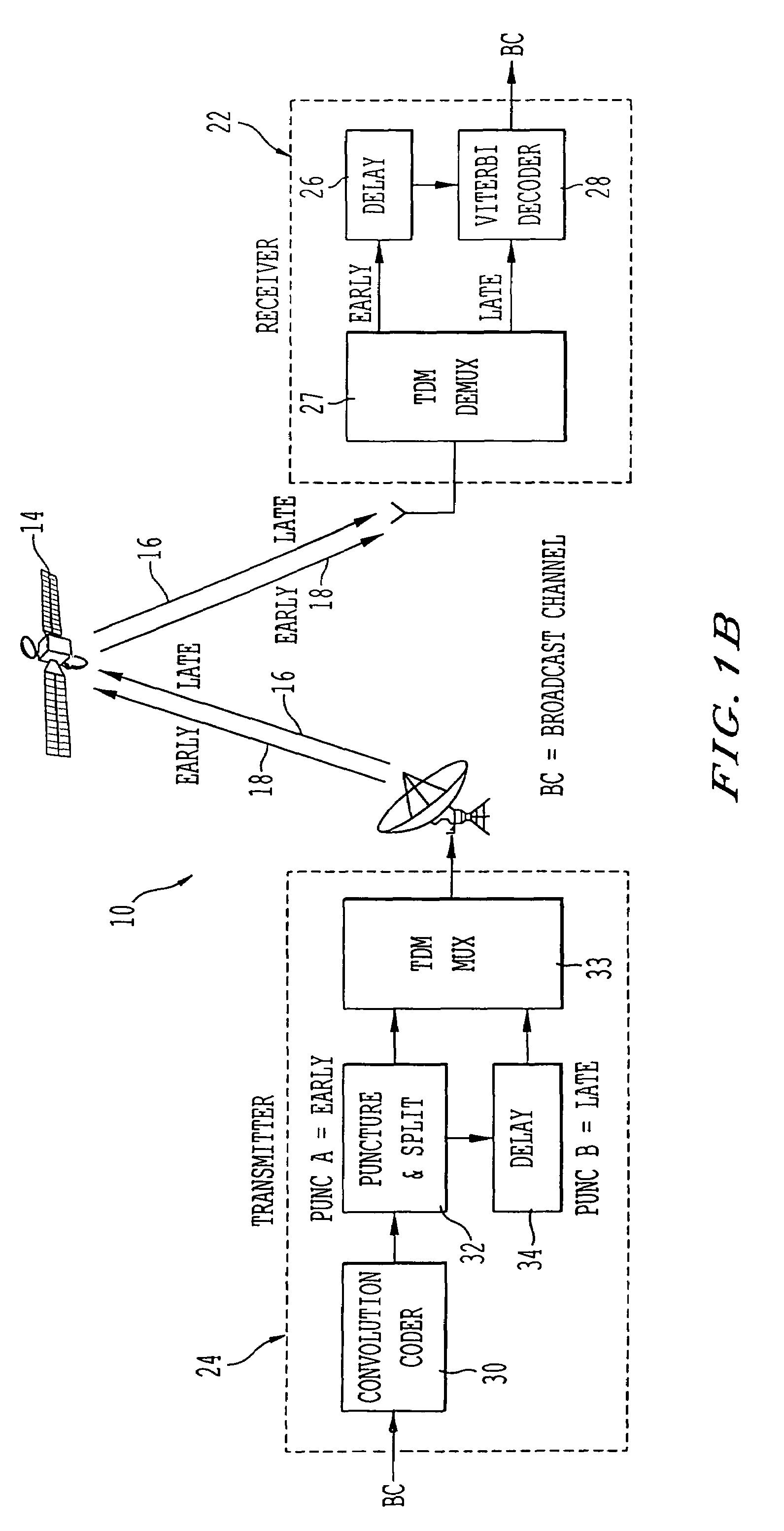Method and apparatus for mobile platform reception and synchronization in direct digital satellite broadcast system
- Summary
- Abstract
- Description
- Claims
- Application Information
AI Technical Summary
Benefits of technology
Problems solved by technology
Method used
Image
Examples
Embodiment Construction
[0029]Satellite communication systems can employ time diversity, or time and space diversity combined, to mitigate the undesirable effects of blockage, shadowing, fading multipath. For example, a time diversity communication system can transmit early and late satellite signals (i.e., one signal is delayed by a selected time interval with respect to the other signal) in a single direct LOS data stream. Alternatively, a time diversity communication system can transmit the early and late signals via respective ones of two direct LOS data streams. The duration of the time interval between early and late is determined by the duration of the service outage due to blockage to be avoided. Experimental evidence referred to herein gives guidance to the magnitude of the delay needed. Also, the two direct LOS data streams can be transmitted by respective ones of two satellites that are separated in space to implement space diversity, as well as time diversity. In both cases, the non-delayed cha...
PUM
 Login to View More
Login to View More Abstract
Description
Claims
Application Information
 Login to View More
Login to View More - R&D
- Intellectual Property
- Life Sciences
- Materials
- Tech Scout
- Unparalleled Data Quality
- Higher Quality Content
- 60% Fewer Hallucinations
Browse by: Latest US Patents, China's latest patents, Technical Efficacy Thesaurus, Application Domain, Technology Topic, Popular Technical Reports.
© 2025 PatSnap. All rights reserved.Legal|Privacy policy|Modern Slavery Act Transparency Statement|Sitemap|About US| Contact US: help@patsnap.com



